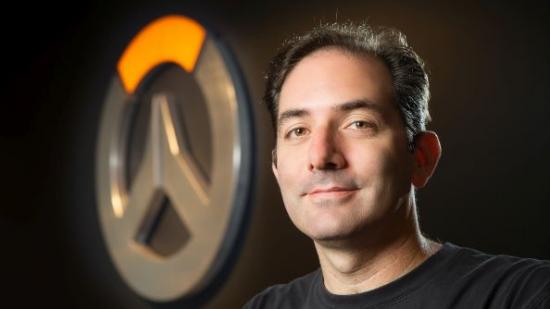With the return of the Overwatch beta, we were given the chance to interview game director Jeff Kaplan on anything and everything we could think of. One topic seemed obvious – the brand new progression system, including levelling up, skins, cosmetics and loot boxes. He explained their thinking behind the current system, possible tweaks that need to be made, the importance of gathering data – and how, at Blizzard, “there is no such thing as a random loot system, no matter what people think.”
Kaplan also told us that Overwatch ranked matchmaking is planned to be part of the beta.
You can find my initial thoughts on the Overwatch progression system on page two of this article. If you’re unfamiliar with the system, it’s worth having a read over, and I put a number of its points to Kaplan over the course of this. Overall, I like it and Blizzard are very happy with what they’re seeing and the player base’s thoughts so far.
“Players have responded really well to the progression system, their behaviours have been what we hoped for and more, which is really cool.” Kaplan explains, “We added this custom game feature with all these great rulesets which players could set on their games and a lot of players are like ‘Yeah, I’m dying to get to that, but there’s no loot boxes for that, so I’m not going to do it right now, I want to get that skin that I’ve had my eye on.’”
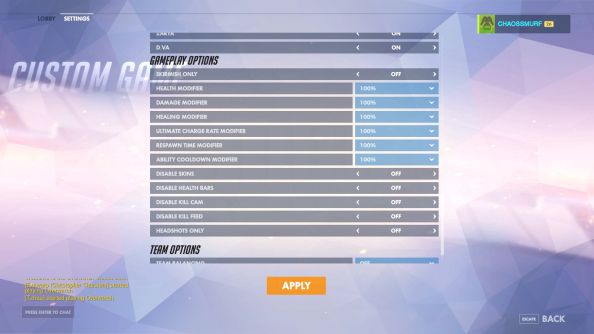
He, personally, is “extremely pleased with the reaction” and says there’s more to come, “I’m excited too because there’s more content coming, legendary skins for all the heroes. It’s funny because we’re working on this stuff right now, so I often lose track of what’s in the game and what’s not in the game. I’ll login to the beta and I’ll go to the hero gallery all like ‘oh my god where’s that, wait till they see that, they’re going to be blown away.’”
We’ve seen glimpses of what might be on the way already with the Raptorian Pharah skin datamined this week, and even outside of big flashy additions, Kaplan’s seeing a good response to smaller cosmetic inclusions. He points to players having fun with the Hearthstone emote sprays as something he’s liked seeing.
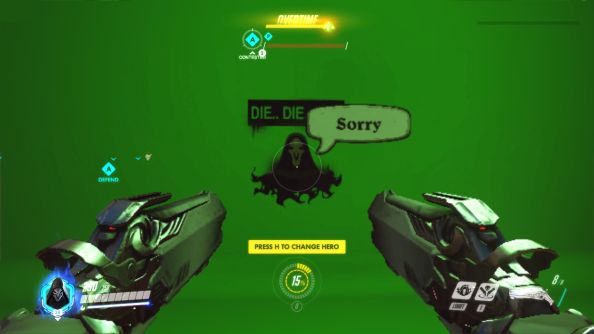
But what about the system of distribution, the loot crates that players earn from levelling up? Kaplan’s happy with those too, particularly that they didn’t just default to a skin store and actually made it possible to earn things through play. He reconfirmed from previous interviews that the plan is to sell loot boxes if people want to buy them.
“We were running internally [at Blizzard] between phase one and two, about two months, and we put the system up and there was immediately [people] like ‘okay, this is awesome, but sometimes I have more money than I have time, it would be really great if I could buy a loot box’ – we like that idea. We want to make it available, we just haven’t got to it yet.”
But they won’t be selling credits or skins individually. Kaplan points out that buying boxes is similar to both, as there is a steady flow of credits from boxes, either by dropping as chunks of currency themselves or by getting duplicates of cosmetics that automatically turn into credits. On the pricing side, he says they simply don’t know and would want it to be “reasonable and non-offensive.” I asked specifically about a comparison to Hearthstone, and Kaplan said that’s where his hope would be, but also explained how the decisions are made.
“The pricing is something the game team advises on, but it isn’t something we’re actively focused on. We’re kinda more ‘hey, here’s a cool system’ and then it was almost like an afterthought [as a paid thing]. There are certain things, as a game developer, when somebody asks you ‘hey, would it be cool to sell these?’ and you take great offense and say ‘no, we’re not gonna do that.’ Y’know, we’re not gonna sell health packs in Overwatch, or bullets.
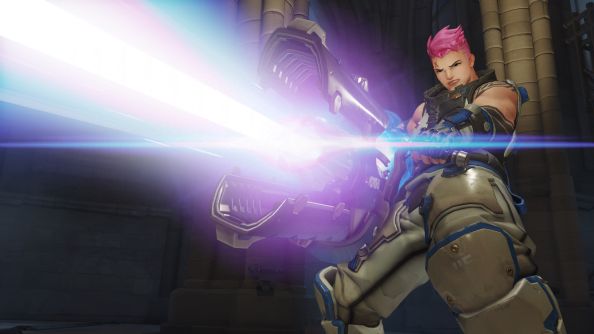
“But if someone wants to buy a loot box, that you can earn, that any player can earn at any time, I don’t really have a problem with that. I don’t think it hurts the game and I think it just helps with some player’s engagement – especially those who don’t have as much time as others.”
As for the actual opening part, Kaplan has some very interesting things to say not only about the Overwatch team’s policy, but Blizzard as a whole, when it comes to loot systems. “I think something that’s very important to note, and I’m not gonna go into a lot of detail here, is being the company that’s made World of Warcraft, Diablo and Hearthstone, I can clearly tell you that there is no such thing as a random loot system, no matter what people think. There is only an illusion of random. Sometimes we do a better job with that illusion than others.”
I asked specifically about Hearthstone’s pack rigging, where your chance of getting rarer cards scales up as you open more packs without doing so, and if Overwatch had a similar system. With a touch of humour, Kaplan says “I don’t know how it works on Hearthstone, but I will stand by what I said – there is no such thing as a random loot system. At least not here at Blizzard, we’re very careful about what we do.”
In the same theme, we also went over the idea of weighting crates towards characters that players are more active on, as I suggested last week. “That’s certainly great feedback,” says Kaplan, “I saw a Reddit post of that poor guy who has played nothing but Reaper and he has zero unlocks for him. That made me feel a little bad, it’s something we will think about and look at.”
Kaplan also mentioned that this player will have credits from duplicates and the like, which was something else I wanted to ask about. Specifically, were they happy with the credit retrieval rate and how many credits people got for dupes? It is, as with a lot of what Blizzard does, all about getting more data before making a decision.
“What I wanna do is look at the statistics over about two weeks and then look at it again at four weeks. The problem right now is that it’s highly anecdotal. To give you an example, this is from my personal experience, I think I’m level 26 or 27, I have 900 credits – which is a lot” he points out. For comparison, I am roughly the same level with half as many while PCGN contributor and Overwatch support master Chris Higgins is in a similar boat as Kaplan.
“Some of the epics that I’ve gotten and one of the legendaries that I got were credit chests [which reward half the amount it costs to buy something of that tier, rather than an item of that tier itself – $$$ Ed]. So certain people have been ‘lucky’ because they’re getting epic and legendary items and they’re not getting those credit chests. What we need to look at is not only the average credits that players are earning, but also the outliers, the players that have gotten extremely lucky or unlucky in either direction and then determine are those outliers acceptable, or do we need to try to bring it in.”

Kaplan mentions Blizzard veteran Mike Heiberg, who has been with the company since 1997, working on everything from StarCraft: Brood War on up, and is in charge of Overwatch’s progression development, “[He’s] an amazing designer, who I have the utmost faith in, who designed and implemented the system. He has a lot of experience with these types of systems so I know we’ll end up in a good place over time.”
The other half of this is the way boxes are actually earned, how easy it is to level up. Again I wanted to get Kaplan’s thoughts on some of what I proposed last week regarding it being a majority-time system, and whether it would be better to be more based on personal performance.
“We need to be careful with time-based, it can lead to deviant behaviour. Right now I feel like the biggest incentive for experience gain is actually winning – I am very happy with that. Where we need to be careful is things like objective time, or kills, because that can also lead to deviant behaviour. We want people to be focused on winning or losing.”
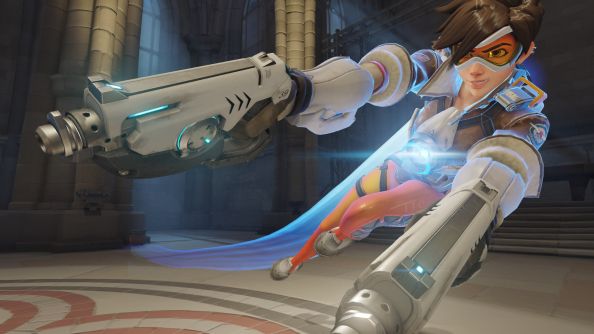
You might be thinking they’re the same thing, but Kaplan gave a good example of where a player’s impact on a game may be significant towards winning or losing, but not involve very measurable values. Say you’re playing fast-moving scout Tracer on a cart-pushing Payload map with a good team who are focused on the objective while you head further along the path to disrupt the enemy.
“Tracer sometimes needs to be played as a harassing, backline skirmisher [where] she’s actually going to have a low objective time. She might not even be killing people, a lot of times with Tracer your job is to string out the enemy defense so that they’re not grouped up, or that you’re turning that Reinhardt around so he’s not facing [your team] with that shield all the time. So you can be an extremely awesome Tracer player who is absolutely a core part of your team winning, but you can have a very low elimination or objective time score.”
That, and situations like it, are why they’re veering away from using performance metrics in-game as a large part of experience gain, they don’t want to accidentally discourage clever play like this. Of course, it’s not set in stone, “Until we see deviant behaviour with the time-based system, we’ll probably stick with something similar to that, but we are tracking a lot of statistics. Not only are we observing the game a lot right now, but we’re playing a tonne of it, trying to get a feel. If we feel like something is off, or the levelling is not being rewarded correctly, we will definitely make adjustments as needed.”
What little performance reward there is, Kaplan says was very deliberately kept to a minimum, and uses only your highest metric, represented by medals, to avoid these deviant behaviours he’s talking about, rather than rewarding you for every category you did well in. “We didn’t want you to feel overly encouraged or discouraged in hero choices [based on how much xp you would get]. We knew it would be easier or more difficult for some heroes to earn medals than others.”
Right now, medic-focused angel-doctor Mercy is proving an issue, “It is Mercy who I want to keep an eye out for, I love Mercy, she’s an awesome hero and the Mercy players are so dedicated to her, I wanna make sure we can figure out a way she can get medals and still feel good, and not feel like she’s getting less experience points.” Kaplan expanded on this, pointing out that “In terms of support, Symmetra can get medals like nobody’s business, Zenyatta can as well and to some degree Lucio, but Mercy is the one I’m most concerned about.”
This mostly comes down to her inability to heal and do damage at the same time, which all three of the others can. I doubt they’re going to strap her pistol to the end of her healing staff – as cool as it might look. It’s more likely that a healing-done medal will be added, or some other support metric that players in those roles can fight for.
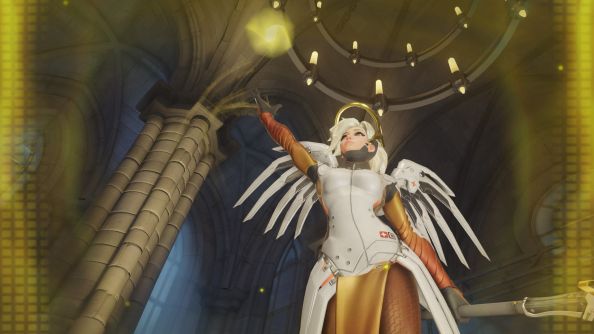
More generally, they’re very happy with what they’re seeing when it comes to level up time. It’s not as scientific as you might think, “You actually start from a gut place which is how frequently do you want somebody to get a level. You also [set] an initial curve to ease people into the system and then you plateau it out. Especially when you’re doing infinite levels like we are, you don’t want it to seem like it’s just going to get exponentially [harder] over time.
“So far, from my play experience, it’s feeling good – like I said I’m about level 27 right now, so I have a pretty good feel for it, but I’d like to play for a couple more weeks to feel like if I’m getting rewarded enough or not. And then, of course, we have the beta community to pull [feedback] from.”
In general, while iteration on Overwatch has been fast, Blizzard are looking to take it slow on the progression system. They’re adding skins and other bits in March and April, as announced on the forums by Kaplan yesterday, but don’t want to change how things are earned until they’ve got a wealth of data to play with. Doubtlessly, this is something that will continue iteration into the launch version of the game and beyond, when the playerbase will increase massively. They’ll be resetting everyone’s gained items as well as their level at least once during beta though, a luxury they’d be hard pressed to convince a paying populace was a good idea, so expect at least some changes before the end.
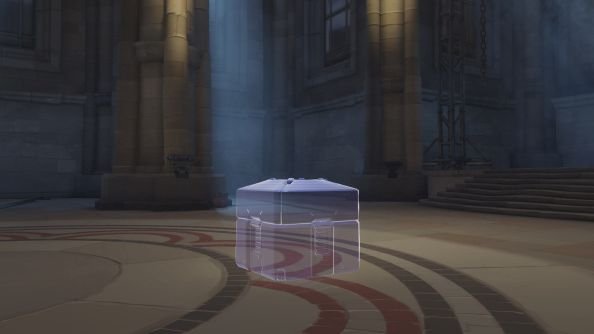
What was clear throughout this interview, from which we’ll be posting some other tidbits over the next week, is that it’s full steam ahead towards release. The window is still” on or before June 21st” and any clarification wasn’t worth asking for – “when it’s done” would come the reply. There is now a fully functional game in there, however, and beyond the ranked matchmaking and intro features still being focused on, it’s time to get down to the intricate balance and tuning behind not only the game itself, but the meta-systems that will guarantee people keep playing for years to come.
On the balance side, we also have Kaplan’s comments onTorbjörn, Bastion, the new control mode and more. Meanwhile, click through to page two for my thoughts on the progression system as it stands.
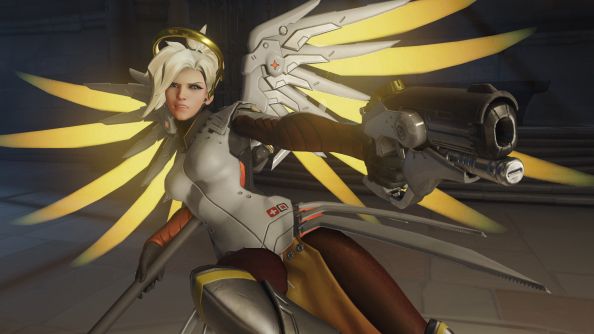
Despite all the bug fixing, rebalancing and map-adding that went on in the latest update to the Overwatch beta, by far the biggest change was the addition of a progression and unlock system for cosmetics. It includes everything from sprays to full skins, unique voice lines and animations to account icons. It adds an element the game lacked, as well as introducing lots of sweet new visual and auditory effects. Here’s how it works, and what I think of it.
Will it land on our best games of 2016 list? It could, it could just.
Blizzard have their own overly-long explanation of exactly what it involves, but it’s basically very simple: you play games to get experience points, which level you up. Whenever you level up you get a loot box, which has four items in it. The items can be any one of the cosmetics, or some in-game currency which can be spent on them, with any duplicates you open being automatically traded in for a small amount of currency based on their rarity. They come in various rarities which have their own costs associated, and generally scale by how complicated they are, but the basic function is that playing Overwatch games now has a purpose beyond conquering that one scoreboard.
And that’s great – it really ties the whole cart-pushing, point-taking, hill-kinging room together. Now if you have a game where your team gets stomped, hey, at least your good performance in comparison meant you got a little more xp, which grabbed you that next loot crate. Weren’t playing particularly well, but your team got the win anyway? You won’t level up as fast, but you did get something for your time. It’s an everybody-wins mentality and your level doesn’t really represent your play skill, only how much time you’ve invested, but it adds a reason to keep playing even when you just got rolled by the tripleTorbjörn defense with two useless Widowmakers on your team.
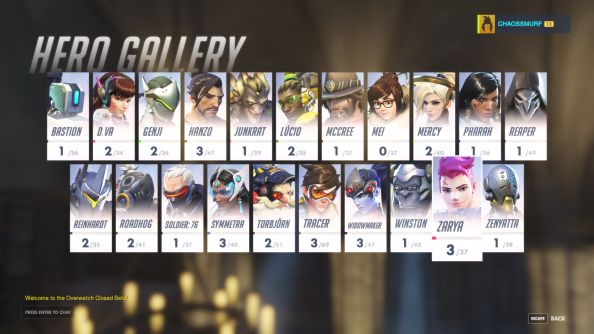
The system as a whole is a great addition, especially since there’s no plans to add mechanically-relevant items to the boxes. Perhaps in the past some of this content would have been automatically available to all players, but it’s fulfilling to level up and earn it. Moreover, yes, they’re inevitably going to let you pay for more boxes at some point in the future, with head-honcho Jeff Kaplan already having confirmed it as a possible direction in various interviews. But money into the game means a longer lifespan and more stuff, cosmetic or otherwise, and that’s a good thing. That said, there are some flaws.
Pricing definitely need a rethink. At the moment, a Legendary skin which changes a character’s look significantly as well as giving different effects on some of their moves, are extremely rare as drops or cost 1000 credits. Fair enough, because they look brilliant. Here’s one of the best, Mei’s fantastic Rescue skin:
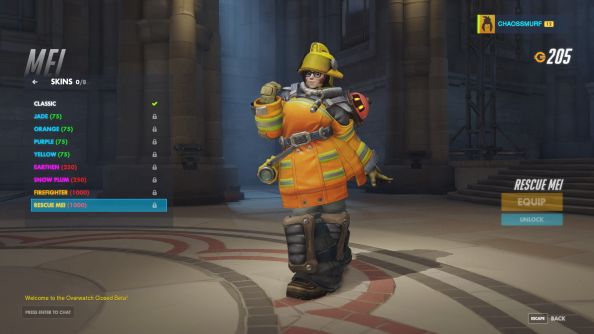
Alright, cool. Looks rad, has all sorts of different bits on it compared to her base version, and includes a robotic fire hydrant friend. I’m into it. Here’s her other Legendary skin, Firefighter Mei:
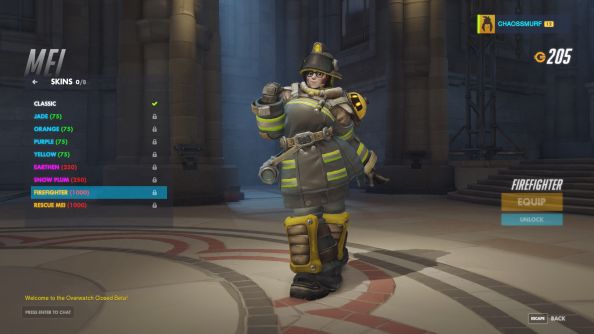
That’s just a recolour of the other one. Recolours are fine, but they shouldn’t each be the same price and rarity as the base version once you’re talking this rare. Imagine really liking one, but not the other, and getting it as a drop? A total waste. This is mirrored on other characters, where most of the Legendary skins are very cool on their own, but have straight recolours at the same price.
The concept of selling recolours isn’t one I have a problem with but they only have a certain value to the player, and in this case it’s no more than the 75 credits you see the cheaper skins going for. Once you’ve got one, it should not be another 1000 credits or low-% chance to get it in black, for the same reason that recolouring the base skins is not expensive. With the current system you can’t even disenchant it to make some progress towards the one you actually want, ala Hearthstone, unless you open a duplicate – something else I’d hope to see changed for final release.
League of Legends uses a system called Chromas which I’d like to see implemented. Each character and skin has a chroma pack that unlocks a series of recolours. League’s versions are generally regarded by the community to be overpriced, but that’s details – recolours are cool and people will want them, but they aren’t as rewarding as a whole new skin and shouldn’t be treated as such. Rather than pay 75 individually for each base skin recolour for my favourite hero, I’d far rather pay 200 and get the lot. Preferably, of course, recolours should be free, as their value – and difficulty to make – is that much lower.
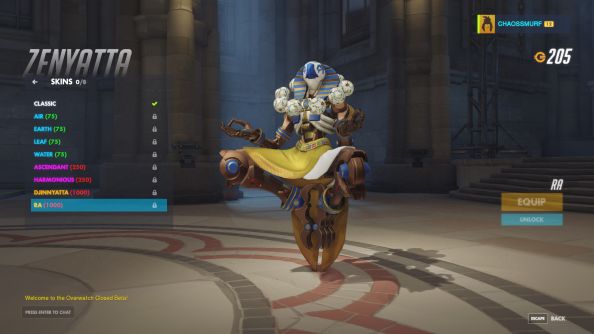
The other issue with skins, which hasn’t yet become clear and may not until some time after release, is that many of the Legendary ones look like completely different characters. They have so far maintained at least a slightly familiar sillouhette, but they’re teetering on the edge. Why is that bad, you may be thinking, shouldn’t they be as different as possible to make them more interesting to collect? Yes, but Overwatch has an already-growing and inevitable competitive scene, and identifying heroes and their abilities within milliseconds will be vital. If those stray too far from their baselines, that becomes an issue, and you never want to ban people from using their hard-earned cosmetics because they’retoo cool. It’s not something that demands immediate change, but should be kept in mind by Blizzard’s artists and designers.
As for leveling up, there’s a great Reddit threadthat breaks down all the values. The important points are this:
- The majority of xp is awarded based on your time spent in the match, at 4.01 per second. Comparitively, finishing and winning the match is only 750 xp, or roughly three minutes. Lose? That’s only 250 xp or a single minute of gametime.
- There is a medal system which awards you for being first, second or third on your team at various statistics. However, only the one of the highest medal awarded gives you an xp bonus. Get three golds and a silver? You get the same xp as someone with a single gold.
- There is no seperate, smaller reward for each kill, or each second spent capping a point, or healing done, or any stat, it’s only on your single highest medal.
My issue with this is that it isn’t properly rewarding especially good games. I am fine with keeping an everybody-wins attitude, and understand why it is there – I wouldn’t want to lower any of these numbers for average play. However, if I go 22 kills for 0 deaths, spend the most time on objectives of my team and generally act like an all-star, I’d like to see the difference in my progression. Currently, my only gain over another member of my team who had done perfectly average, getting a single bronze medal, is well under 1% of a level once the cap is reached.
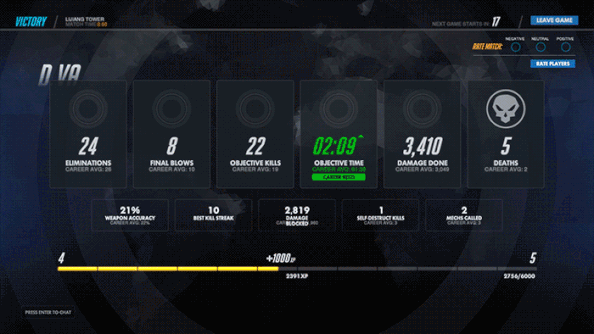
Doing well should be its own reward, but as much as the levelling-up feedback loop does wonders for encouraging you through bad games, you don’t want it not adequately celebrating good ones. Overwatch already discourages scoreboard checking by only showing you your position relative to others, which is good, but it means that when I do well, the game should be shouting it at me as loud as possible. I wouldn’t want it to go full-CoD, popping up three different notices whenever I get a headshot, but there’s definitely a lovely, rewarding middle-ground in there.
I would also like to see a weighting of rewards from loot boxes based on which characters you play. It shouldn’t be too heavy, because a new skin may inspire someone to play a hero they hadn’t tried before, but one of TF2’s great downfalls was not only did its drop system not reward play in any way, but you were never likely to get the items for the classes you actually played. With Overwatch’s larger pool of characters that’s even more of a worry, and some slight backend magic where, noticing that I spend 25% of games as D.Va or Zarya, my loot crates are more likely to have their items in would be perfect. I’m assuming that it either already does or is planned to have a similar guaranteed-Legendary system to Hearthstone’s, to prevent many-box feel-bads.
So, overall the system is a great addition, but with work needed to make it something I’ll continue to love for all-time. My opinions on the game itself haven’t changed significantly since the last time I wrote about it in-depth, in our Overwatch preview from Blizzcon. It’s still brilliant, and I still think it’s going to take over the world. Balance changes to its more annoying characters have pushed it in the right direction and, so long as it’s properly supported (ranked mode at release should be the team’s number one priority), it could grow to challenge CS:GO for biggest FPS in the world. Even if it doesn’t, I expect I’ll pour hour after hour into it for the next year.
